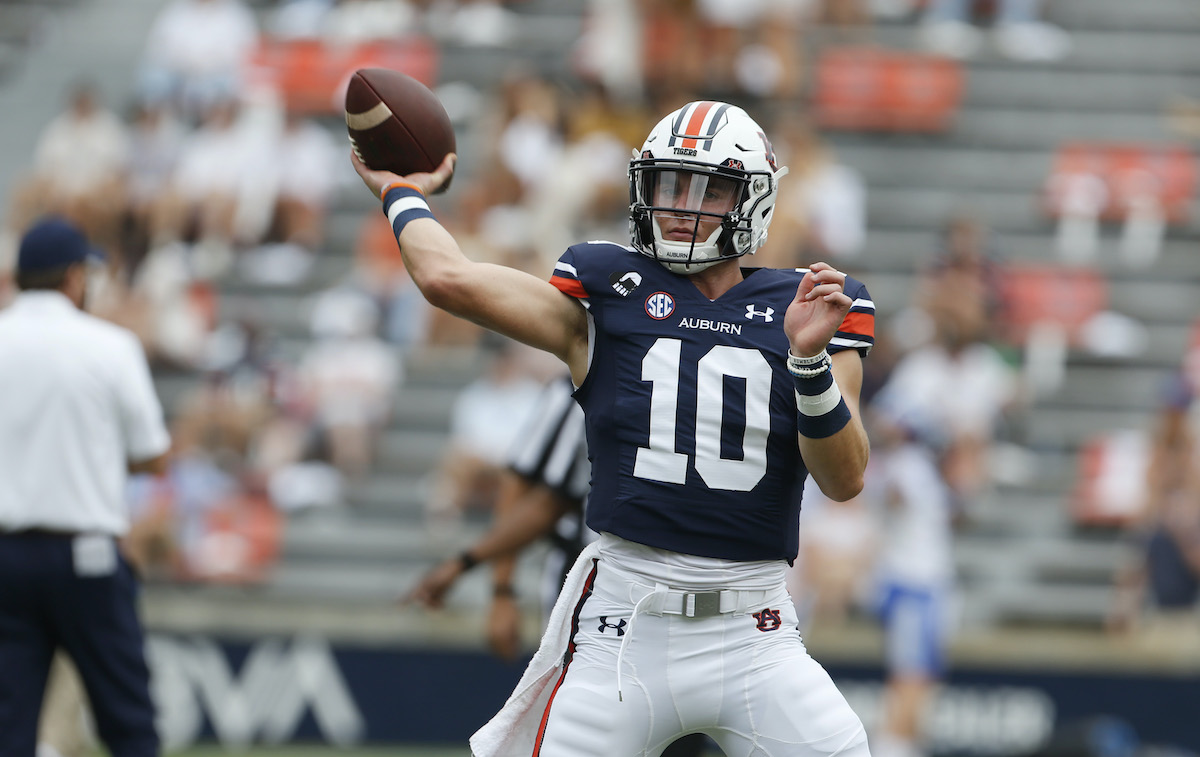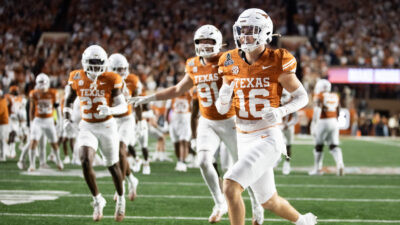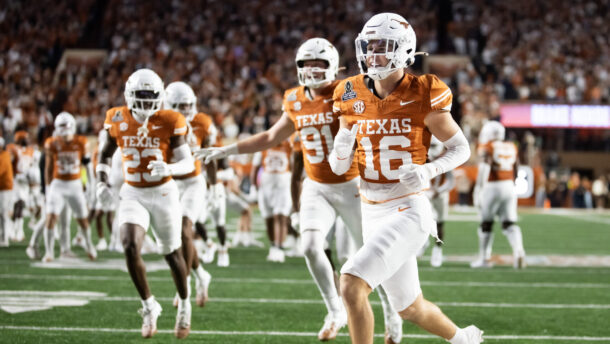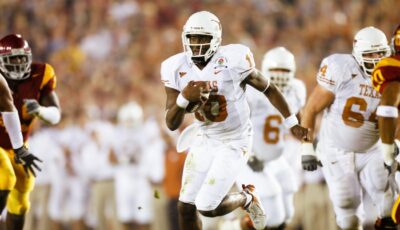
The 2020 season was certainly unique for a variety of circumstances, but as Auburn opens spring practice ahead of what is hopefully a much better 2021 season in terms of on-field results, it’s business as usual.
With April 17 set as the date for the annual A-Day game wrapping up first-year head coach Bryan Harsin’s first period of spring practice on The Plains, the former Boise State coach has his hands full transitioning from a team that suffered at least 4 losses in each of the 7 seasons since it last won an SEC championship.
“You’ve got a team up north [Alabama] that’s doing a great job,” Harsin said in February. “Well, someone has to come here and figure out a way to compete with them. I know Gus [Malzahn] did a good job here, but things change and that’s just the nature of it. We’ve got to compete in all areas.”
There are huge holes on the offense to fill in the form of replacing essentially all of Auburn’s receiving production from the past season, but the Tigers return much of the defense including what should be one of the better linebacker groups in the country.
With the mission for Harsin to return Auburn to the Top 25, these are the 6 biggest questions I have facing the team as Auburn opens spring practice:
1. Is the third time the charm?
The year is 2021, but the question remains the same: Can Bo Nix push this team over the top?
After Nix won SEC Freshman of the Year in 2019, Gus Malzahn brought in Chad Morris to help maximize the potential that the 5-star recruit was expected to be. It sounded like a brilliant idea. Nix’s completion percentage and yards per attempt only marginally improved, but his overall play was worse. Malzahn didn’t make it to the end of the year, and Morris is no longer with the program.
Insert Harsin and Mike Bobo. Harsin has a strong track record of developing QB talent at Boise State, and if he has any hopes of bucking the trend that is losing 4 or 5 games a year, it starts at quarterback. There are plenty of other challenges on the offense that need to be addressed, but if Nix doesn’t show signs of immediate improvement in his third season, his status as the starter won’t be nearly as secure as it was under Malzahn.
2. Which WR emerges?
A better question may be which WRs (plural) emerge for Auburn. The Tigers lost their top 3 pass-catchers from a season ago and only return 25.9% of receiving yards from 2020, which ranks last in the SEC.
Replacing Seth Williams’ ability to win 50-50 balls is next to impossible, but Elijah Canion has a near-identical frame and left quite a statement at the end of the season by catching 3 passes for 80 yards and a touchdown against Northwestern.
Anthony Schwartz’s speed will be sorely missed, as will the experience of Eli Stove, but Auburn has plenty of young options to choose from along with Shedrick Jackson who has been Auburn’s best blocking receiver. Auburn brings in 2 wide receivers and a tight end in its newest recruiting class, and the continued development of a healthy Brandon Frazier is enticing.
3. Can Tank Bigsby avoid the sophomore slump?
For as much as the Auburn offense sputtered in 2020, the Tigers were blessed with the SEC Freshman of the Year for the second straight season. Bigsby ran for 972 yards and 5 touchdowns on 138 carries behind a porous offensive line, at best.
While Harsin has developed a reputation of a QB developer, he also believes in using a workhorse running back. Harsin produced a 1,000-yard rusher in 6 of his 7 seasons at Boise State, with the lone exception being the 2020 shortened slate.
With Nix learning his third offense in as many years, there’s likely to be an even bigger reliance on Bigsby to carry the load as Auburn works to find receivers. Throw in the transfers of D.J. Williams and Mark-Anthony Richards, and there’s a smaller running-back room to share carries.
4. Will the offensive line at least improve to league average?
As easy as it is to blame Nix, he received no help from his offensive line in 2020. Partly under his own volition, Nix was constantly scrambling and eventually lost the confidence and swagger he developed as a freshman.
The good news for new offensive line coach Will Friend is that Auburn returns 100% of it starts on the line from last season. The bad news is that there’s no added talent from the transfer portal or recruiting class that will compete immediately to help improve Auburn’s biggest area of need.
While the Tigers shouldn’t be expected to compete for the Joe Moore Award, if the strength and conditioning program can add some size to a guy like Brenden Coffey and the line manages to stay healthy, anything has to be better than last year.
5. Which freshman makes a case to start Week 1?
Despite the sentiments from another disappointing season for the Tigers in 2020, Auburn actually returns quite a bit of experience in 2021, making it difficult for a freshman to win a position battle.
On offense, wide receiver Tar’varish Dawson likely has the best case to start in a depleted receiving corps. Dawson is a 3-star recruit with blazing speed a la Schwartz. The freshman runs a 10.58 100-meter dash, according to 247Sports.
Defensively, new addition Dylan Brooks may compete at defensive end, and Lee Hunter could compete for time at defensive tackle behind Tyrone Truesdell. Hunter was formerly the prize of Auburn’s most recent recruiting cycle, ranking 80th in the nation, before the Tigers added Brooks, who ranks 76th and was able to break his commitment from Tennessee in February.
6. Does Bryan Harsin have recruiting magic?
Speaking of Brooks, Harsin did an admirable job saving Auburn’s 2021 recruiting class from heading to the SEC gutters that it was poised to finish in. A class that once ranked 47th in the nation in 10th in the SEC, now sits at 20th nationally and 8th in the league with the finishing piece of Brooks, which is still the first time Auburn has finished outside the top 12 since 2009.
With Brooks’ signing, Auburn now has 85 scholarship players for 2021. The Tigers are 23rd in the 2022 cycle with 3 commits. It’s obviously a tough transition switching from Idaho to the trenches of the Southeast, but Harsin has made it known that priority No. 1 is locking down Alabama after signing just 4 in-state prospects in 2021.
Harsin has already demonstrated an ability to out-recruit his SEC foes in just his first few months, signing Tar’varish Dawson over the likes of Kentucky and Arkansas and beating Tennessee and South Carolina for Colby Smith and Juwon Gaston. If Auburn can return to a top 25 ranking, Harsin’s job will only become easier.







